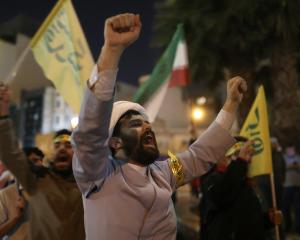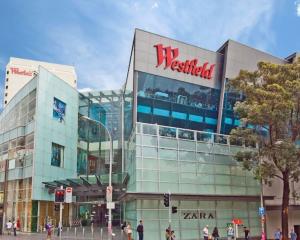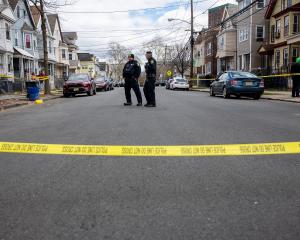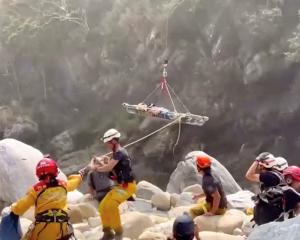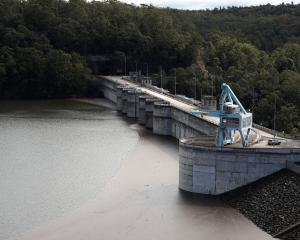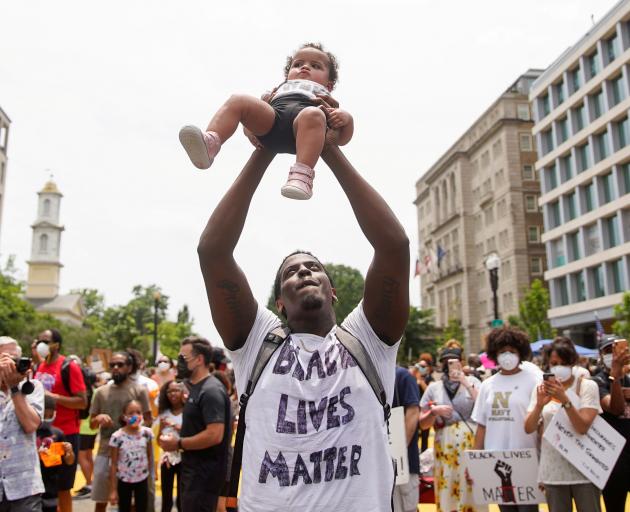
The protest in the nation's capital was shaping up as the largest of the marches seen this week in cities and smaller towns nationwide, as well as in countries around the world. It coincided with a second memorial service for George Floyd (46) who died on May 25 after a Minneapolis policeman knelt on his neck for nearly nine minutes.
His killing, recorded in excruciating detail on a bystander's cellphone, has led to a wave of protests and national soul-searching over the country's legacy of violence and mistreatment of African Americans and other minorities.
Near the front of the White House, Katrina Fernandez (42) said she was both hopeful and impatient in joining the protests to demand what she viewed as long overdue reforms in policing.
"I'm just hoping that we really get some change from what's going on. People have been kneeling and protesting and begging for a long time and enough is enough," she said. "We can't take much more."
Local media has forecast that tens of thousands would turn out in the US capital, despite the risks still posed by the coronavirus, which ravaged the country over the past two months and still presents a deadly threat, according to health experts. Official estimates of the number of protesters were unavailable.
As in previous days, the protests in cities from Los Angeles and Chicago to New York and Washington involved a series of loosely organized marches.
In the nation's capital, thousands gathered at the Lincoln Memorial and elsewhere before converging on the White House. A moving throng of people marched past the George Washington University Hospital chanting "Hands up, Don't shoot!" "We March for hope, not for hate," and "I can't breathe!"
That last chant echoed protests from New York in 2014, when Eric Garner died in police custody after an officer used a banned chokehold on him. Garner and Floyd are part of a long line of black men and women killed by white officers.
The second memorial service for Floyd was held in a North Carolina town where he was born. Hundreds lined up at a church in Raeford to pay their respects during a public viewing, and a private service for the family was conducted later in the day.
Floyd's first memorial was held on Friday in Minneapolis. His funeral is scheduled on Tuesday in Houston.
COAST TO COAST
In New York, a large crowd of protesters crossed the Brooklyn Bridge into lower Manhattan on Saturday afternoon, marching up a deserted Broadway, where many of the shops were boarded up, according to social media posts.
Thousands of others gathered in Harlem near the northwest corner of Central Park to march downtown, about 100 blocks, to the city's Washington Square Park.
In Philadelphia, demonstrators gathered on the steps of Philadelphia Art Museum steps chanting, "No justice, No peace." Others marched along Benjamin Franklin Parkway, through John F. Kennedy Plaza, and around Philadelphia City Hall.
In California, the country's most populous state, demonstrations occurred in many cities including Los Angeles and San Francisco, where protesters briefly blocked traffic on the Golden Gate Bridge as motorists honked in solidarity.
Demonstrators in Washington appeared to be from diverse backgrounds and were dressed for the 90 degree heat. A group wore hospital worker's clothing and held signs with slogans including "White Coats 4 Black Lives" and "I Love Being Black."
Like many of the protesters, Michael Drummond, a 40-year-old government employee, is white.
"Especially as a white person, I benefit from the status quo and so not showing up and actively working to deconstruct institutional racism makes me complicit," he said.
PARTY ATMOSPHERE
Protesters assembled on H Street NW and the newly rechristened Black Lives Matter Plaza, a strip leading up to the White House where the city painted "Black Lives Matter" in huge yellow letters on the pavement on Friday in defiance of President Donald Trump.
It was near the spot where US Park Police triggered outrage on Monday evening by firing smoke grenades and chemical irritant "pepper balls" before charging into peaceful protesters.
Afterward, Trump walked from the White House to the front of a nearby church and posed holding a Bible, a gesture criticised by many Democrats and even some members of Trump's Republican Party.
On Saturday, the area had an atmosphere akin to a block party before the crowd marched toward downtown. People coloured in giant tributes to Floyd, while songs such as Sweet Caroline by Neil Diamond and Alright by Kendrick Lamar blared through speakers.
The demonstrators included families and people of all ages carrying signs saying "Fed up," "All lives do not matter until black lives do," and "My black son matters."
Uniformed officers were out in smaller numbers than earlier in the week and generally assumed a more relaxed posture, wearing patrol uniforms rather than body armour and helmets.
Even so, six buses unloaded hundreds of uniformed military personnel, most wearing body armour and carrying shields, at the White House grounds, a Reuters photographer said. Military Humvees were parked on tree-lined city streets.





